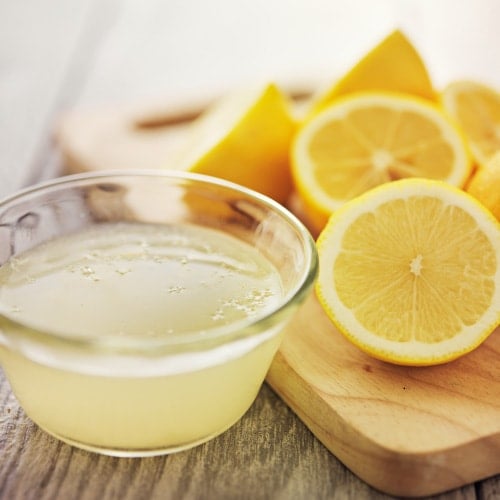Cream of tartar, also known scientifically as potassium bitartrate, is a versatile ingredient that plays a crucial role in various commercial applications. This fine, white powder is a byproduct of winemaking and is commonly used in the culinary industry as a stabilizing and leavening agent. In commercial baking, cream of tartar is frequently used to stabilize egg whites, preventing them from collapsing and aiding in the creation of light and fluffy meringues and souffles. Its acidic properties also activate baking soda in recipes, acting as a leavening agent to help baked goods rise evenly and maintain their structure.
Shop All Cream of TartarWhere Does Cream of Tartar Come From?
Cream of tartar is formed during the fermentation of grape juice into wine. When grape juice is fermented, potassium bitartrate crystals, also known as wine diamonds, are left behind in the barrels. These crystals are then collected and processed to create cream of tartar.
What Does Cream of Tartar Taste Like?
Cream of tartar has a unique taste profile that sets it apart from other common kitchen ingredients. This powdery substance is often described as having a slightly acidic and tangy flavor, with a hint of bitterness. When used in recipes, cream of tartar adds a subtle tartness that can enhance the overall taste of a dish.
Despite its sour taste, cream of tartar is not typically used as a primary flavoring agent in recipes. Instead, it is often added to baked goods and confections to stabilize egg whites, prevent sugar crystallization, and create a lighter texture. In these applications, cream of tartar's flavor mostly fades into the background, allowing other ingredients to shine while benefiting from its unique chemical properties.
Where to Find Cream of Tartar
You can find cream of tartar in the spice aisle of most grocery stores. Bakeries can also buy cream of tartar in bulk wherever they buy baking supplies.
Cream of Tartar Uses
Cream of tartar is a versatile ingredient that you can use for a variety of recipes and applications. Below we've listed some of the most common uses for cream of tartar:

- Making Smooth Meringues - Cream of tartar helps to stabilize egg whites and speed up the foaming process when making meringue. To give your egg whites more stability, add 1/8 teaspoon of cream of tartar per egg white.
- Baking Snickerdoodle Cookies - Most traditional snickerdoodle recipes include cream of tartar to give these cookies their signature tangy taste and chewy texture.
- Substituting Baking Powder - Baking powder is made by combining baking soda and cream of tartar. If you’re in a pinch, you can substitute 1 tablespoon of baking powder with 1 teaspoon of baking soda and 2 teaspoons of cream of tartar.
- Reducing Discoloration of Vegetables - When boiling or steaming vegetables, add 1/4 teaspoon of cream of tartar to the water to keep them bright and colorful.
- Preventing Sugar Crystals in Candy Making - Adding cream of tartar to your cooking sugar can help stop the formation of crystals that ruin the texture of freshly made candy.

Cream of Tartar Substitute
If you need a quick substitute for cream of tartar, use 1 teaspoon of lemon juice or white vinegar to replace every 1/2 teaspoon of cream of tartar in your recipe. These ingredients will replace the acidity of cream of tartar in your dish.
Cream of Tartar vs Baking Soda
Cream of tartar and baking soda are both common kitchen ingredients used in baking, but they serve different purposes and should not be used interchangeably. Understanding the differences between cream of tartar and baking soda is essential for achieving the desired results in your baking projects.
Cream of tartar is primarily used in recipes that require an acidic ingredient to activate baking soda, while baking soda is used on its own or in combination with an acidic ingredient to create the necessary chemical reaction for leavening.
How Long Does Cream of Tartar Last?
Cream of tartar does not expire so long as you store it in a cool and dry space. When in doubt, check for a powdery, white appearance and a slightly acidic smell. Discard your cream of tartar if it has become discolored or if it has a strong smell.
How to Store Cream of Tartar
Proper storage of cream of tartar is essential to maintain its quality and potency. Like with many other ingredients, cream of tartar should be stored in an air-tight container to prevent moisture from affecting its texture and potency. It should also be stored in a cool, dark place to avoid direct sunlight and heat sources, as exposure to light and heat can degrade its quality over time.
From stabilizing egg whites to preventing sugar crystallization, this powdery substance has many benefits that make it a valuable addition to any kitchen. Whether you looking to improve the texture of your meringues in your new bakery or a chef in need of a natural cleaning agent, cream of tartar is a useful ingredient to have on hand. Its ability to enhance flavors, improve the texture of baked goods, and even aid in the cleaning of kitchen surfaces makes it a versatile and valuable ingredient for commercial foodservice operations.



